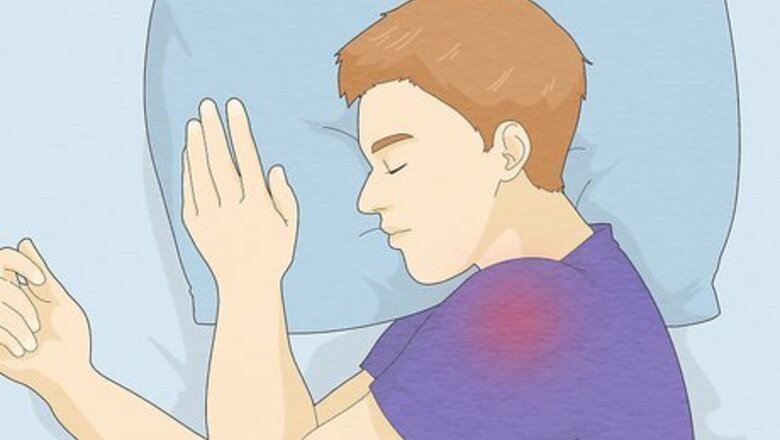
views
- To side sleep, sleep on your unaffected arm while hugging a pillow with your frozen shoulder.
- To sleep on your back, slide a pillow underneath your affected arm and rest your hand on your stomach.
- Take OTC pain medication and use hot and cold compresses to reduce pain and swelling before you go to sleep.
Best Sleeping Positions

Sleep on your unaffected arm if you’re a side sleeper. Sleeping on your frozen shoulder at night can make it more painful, and it’s probably not very comfortable to begin with, either. If you typically sleep on your side, switch to the side with the arm that isn’t hurting. If you’re dealing with a frozen shoulder, sleeping on your stomach isn’t recommended. Try sleeping on your side or on your back until your shoulder is healed.
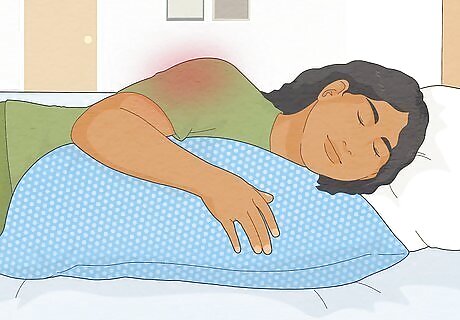
Hug a pillow to your chest while side sleeping. To keep your arm immobilized while you sleep, grab a pillow and hug it with your frozen shoulder arm. This will support your shoulder as you sleep and keep it in one spot. As you snooze, make sure you’re using a supportive, cushioned pillow for your head. This will keep your upper body supported as you find the right position to sleep in with a frozen shoulder. For extra support, try hugging a body pillow. Tuck it in between your knees to keep your spine straight and your neck supported.
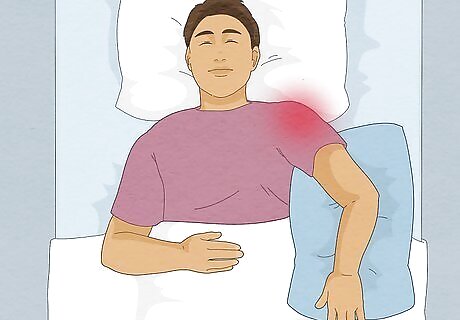
Put a pillow under your arm while sleeping on your back. Tuck a pillow underneath your affected arm, then let your hand rest over your stomach. This will keep your arm slightly elevated and also hold it in one spot while you snooze. Doctors also recommend sleeping with your arms above your head to help elongate and stretch the shoulder muscles as you sleep. However, this can be a tough position to get comfortable in, so not many people choose to do this.
Minimizing Pain & Discomfort
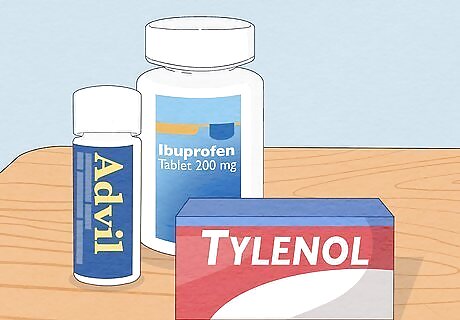
Take OTC pain medicine before bed. Over-the-counter pain relievers, like Tylenol, ibuprofen, and Advil can help take some of the pain away. About 1 hour before you go to bed, take a pain reliever, following the dosage instructions on the bottle.

Use hot and cold compresses to reduce swelling. Alternating between hot and cold will help numb the pain and also promote healing. Use ice packs for about 20 minutes at a time, then switch to a warm washcloth or heating pad. Try using a cold pack and then a hot pack right before bed so you can fall asleep easier.

Stretch your shoulder gently to loosen it up. Specific stretches can help heal a frozen shoulder and get you to sleep easier. If you haven’t been to a physical therapist yet, try exercises like: Pendulum stretch: Lean over slightly, letting your affected arm hang loose. Swing your arm in a small circle, doing 10 revolutions each direction. Do this exercise once a day. Towel stretch: Grab a 3 ft (0.91 m) long towel and hold it with both hands behind your back. Slowly pull your good arm up your back, using the motion to stretch your affected arm. Try this exercise 10 to 20 times per day. Cross-body reach: Grab your affected arm by the elbow with your good arm, pulling it across your chest. Use gentle pressure to feel a stretch in your shoulder. Hold the stretch for about 20 seconds, and repeat this exercise 10 to 20 times per day.
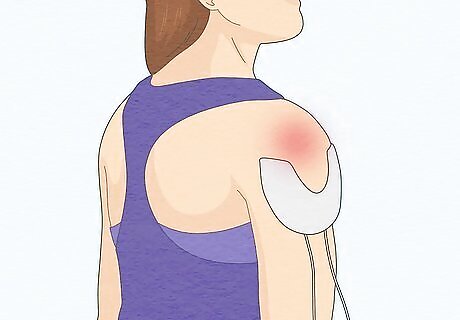
Try a TENS machine to block painful nerve responses. A Transcutaneous Electrical Nerve Stimulation (TENS) machine sends electrical impulses into your body to block pain and discomfort. Attach the nodes around your shoulder area and use the machine before you go to sleep. If you have any sort of heart issues, talk to your doctor before using a TENS machine.
Frozen Shoulder Treatment

See your doctor for a diagnosis. If you haven’t been to your doctor yet, make an appointment with them to talk about your symptoms. They will diagnose you with a frozen shoulder based on what your symptoms have been and a physical exam. Common symptoms include: Trouble rotating your arm outward Discomfort or pain during driving, eating, and sleeping Stiffness and pain at the shoulder joint
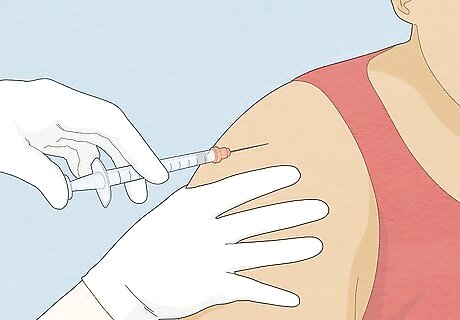
Ask your doctor about steroid injections for pain relief. Getting a good night’s sleep is important, and that’s tough to do with a frozen shoulder. If you haven’t been able to sleep, talk to your doctor about steroid injections. These can help reduce the swelling and inflammation, leading to less pain. These are also called cortisone shots.
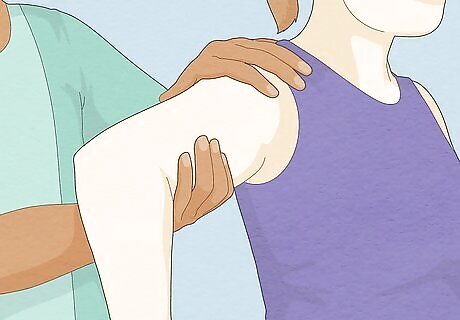
Work with a physical therapist for specific exercises you can try. The most common way to treat a frozen shoulder is through specific stretches and exercises. Have your primary doctor refer you to a physical therapist, then go to weekly or bi-weekly sessions to learn a routine that works for your shoulder. Your physical therapist will likely give you a list of exercises you can do at home as well.
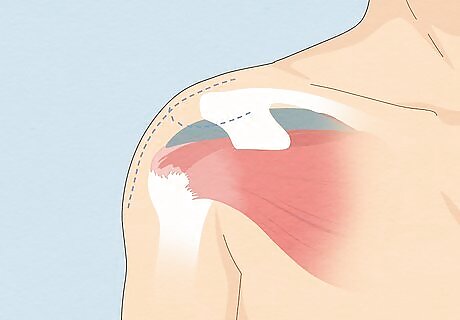
Undergo surgery as a last resort. Frozen shoulder is typically caused by scar tissue inside of the body. In severe cases, you may need to be put to sleep while a doctor manipulates your shoulder. Or, your doctor may bring you in for surgery to remove the scar tissue. Typically, less invasive methods will be tried first before undergoing surgery.



















Comments
0 comment